The pencil, the pen, the moviola, the camera and the recorders have taught me to ‘somehow’ assemble words, pictures, objects, my very existence. (A typewrited text shown in Gianfranco Baruchello retrospective exhibition “Il Montaggio” – Galleria il Mercato del Sale, Milan – 1977 – translation by Socks)
Rediscovered only recently by means of a series of retrospective exhibitions and dedicated screenings, G.Baruchello and A.Grifi’s “La Verifica Incerta” (“Disperse exclamatory phase“) is one of those seminal works that are so ahead of their time, they end up getting the deserved recognition only after decades of oblivion.

Yet, when it first came out, in 1965, this video piece was consider revolutionary within the authors’ intellectual and artistic milieu: one of the earliest (if not the very first) ‘ready-made film‘, the 35’ found footage montage was inspired by Marcel Duchamp (close friend of the author, who appears in the first scenes) and supported by John Cage.
A schizophrenic result of the encounter between Cinecittà’s pop culture and avantgarde expression, the movie’s inception came when the two authors (Gianfranco Baruchello, a central figure in Italian conceptual and political art of the 20th Century we just introduced on Socks some days ago, and Alberto Grifi, a singular painter, experimental filmaker, editor, artisan…) happened to purchase about 150.000 meters of left footage from US movies from the 1950’s and 1960’s, otherwise destined to destruction.

The many physical segments of these mass- and B-movies were assembled together by means of scotch tape, without following any script or plot, yet ending up composing an ironic encyclopaedia of leftovers, a linguistic experiment in montage and film, a heir of Dadaist deconstruction and recontextualisation (détournement) and a precursor to the idea of the archive as an artistic medium. In fact, Baruchello himself declared: “I can make a film as I can make a painting: what concerns me is the editing”

Gianfranco Baruchello working on La Verifica Incerta
The work was born out of the context of early conceptual experiments of Italian and French literary avantgardes of ‘Gruppo 63‘ and ‘Nouveau Roman‘. According to art critic Lucilla Meloni, subverting any narrative linearity, ‘La Verifica Incerta’ was able to give origin to a sort of surreal taxonomy. Meloni also associate Michel Foucault’s description of the so-called “discursivity authors” in “Qu’est-ce qu’un auteur?” (1969) to the legacy of Baruchello and Grifi: “discursivity authors” are those who are not only the authors of their works, but who “have produced something more: the possibility and the rule of forming of other texts”. This is profoundly appropriate, as Verifica Incerta has eventually become an open text whose format ended up being used, reinterpreted or simply copied by many different authors, who, according to Pier Vittorio Aureli in a recent comment on Socks, unfortunately lacked the “critical aim” present in Baruchello and Grifi.
Although Aureli does not precise which posterior works he refers to, Italian television ongoing satyrical experiment Blob (1989-on), or recent Christian Markley’s The Clock (2010), come to mind.

I am associated with the concept of fragment: the fragment is important because it gives you the idea of what you read in it, but also the idea of lack: What is missing when you produce a fragment?
The syllable is part of a word, the word is part of an ideology, of a culture, of your own manifesto.So the operation of Verifica Incerta was to approach cinema, that was not my job, but that in some way was the image, and take a tiny sample of a part of the Hollywood-film saga by saying: “I talk about it”. Not to be polemical with the style, with the rhetoric of the cinema, but in the sense of turning to comedy some typical aspects of American language, or at least turning them into a critique that was somehow verging to a obvious irony. An apparent precedent, that I discovered when I presented the work in America, may be the 1936 film of Joseph Cornell “Rose Hobart“. However that case was quite different, being based solely on the editing of frames of stars, taken from the 1931 George Melford film “East of Borneo”.
I think “Verifica” to be important for this reason, because it was a cultural operation that gave rise to a practice, now widespread and used by various audiovisual media, of “making cinema out of cinema”
(From an interview Baruchello gave to Lucilla Meloni, available here in Italian – translation by Socks)
The movie is available on YouTube (a selection of scenes follows):







Further reading:
La Quadriennale di Roma 2014 – Intorno a Verifica Incerta (with interview to Baruchello by Lucilla Meloni)
Transcribed Lecture by filmaker Harun Farocki on La Verifica Incerta
Gianfranco Baruchello and Alberto Grifi: La verifica incerta (on Experimental Cinema)
Verifiche per gli anni a venire – Intervista con G.Baruchello (Artribune)
Baruchello e Grifi – Verifica incerta (with an excerpt from an Italian essay by Enrico Ghezzi -co-founder of Blob-)
Monographies / screenings:
Baruchello e Grifi. Verifica Incerta. L’arte oltre i confini del cinema. Lorenzo Micheli Gigotti, a cura di Carla Subrizi (review on Nero Magazine)
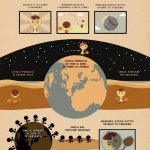
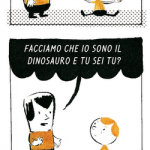
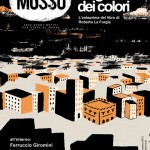
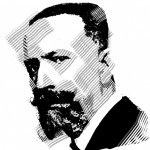
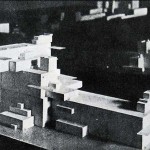
Leave a Reply